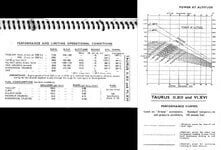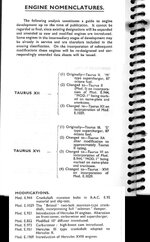Navigation
Install the app
How to install the app on iOS
Follow along with the video below to see how to install our site as a web app on your home screen.
Note: This feature may not be available in some browsers.
More options
You are using an out of date browser. It may not display this or other websites correctly.
You should upgrade or use an alternative browser.
You should upgrade or use an alternative browser.
Bristol Taurus problems?
- Thread starter Trilisser
- Start date
Ad: This forum contains affiliate links to products on Amazon and eBay. More information in Terms and rules
More options
Who Replied?Antarctica
Airman
- 88
- May 20, 2023
The Taurus was generally unreliable at first. Bristol Beauforts were grounded in 1940 for 3 months as the crews almost mutinied (but still agreed to do one important sortie in this time). The Taurus then underwent rework creating the later versions. It was still not "good" so the UK Beaufort Mk.II was re-engined with the P&W R-1830 Twin-Wasp. Australian Beauforts had the P&W R-1830 from new.
By the time the Albacore came into service, the Taurus was "fixed" & much more reliable but I suspect they were just using up obsolete equipment.
By the time the Albacore came into service, the Taurus was "fixed" & much more reliable but I suspect they were just using up obsolete equipment.
Simon Thomas
Senior Airman
These are the engine limitations from the Albacore Pilot's Notes.


So the Taurus II has a prop/engine vibration b/n 2550 and 2750, which the XII does not have.
I don't know the difference between the II and XII.
So the Taurus II has a prop/engine vibration b/n 2550 and 2750, which the XII does not have.
I don't know the difference between the II and XII.
Lets see.The Taurus was generally unreliable at first. Bristol Beauforts were grounded in 1940 for 3 months as the crews almost mutinied (but still agreed to do one important sortie in this time). The Taurus then underwent rework creating the later versions. It was still not "good" so the UK Beaufort Mk.II was re-engined with the P&W R-1830 Twin-Wasp. Australian Beauforts had the P&W R-1830 from new.
By the time the Albacore came into service, the Taurus was "fixed" & much more reliable but I suspect they were just using up obsolete equipment.
Beaufort - Taurus engined prototype first flew Oct 1938. First production aircraft delivered Nov 1939. First squadron converted to type starting that same month. Last Taurus engined Beaufort IA left production line in Jan 1944. Last front line squadron to use this version was 217 in Ceylon which finally gave them up in Sept 1944.
P&W Beaufort Mk.II first production aircraft flew Aug 1941. Last Mk.IIA delivery Nov 1944. Last front line squadron use that Mark was 39 squadron in the Med in Jan 1944.
For most of the period Aug 1941 to Jan 1944 both versions were produced in parallel (but at different factories IIRC).
Albacore - first flight of prototype Dec 1938. First production aircraft flew Jan/Feb 1940 with the last of 800 coming off the production line at the end of 1943. First FAA squadron received the type in March 1940. Last front line FAA use was in Oct 1943 with front line RAF use continuing until Feb 1945.
So no, Albacore production did not start when all the Taurus problems had been solved. Nor did it simply use up obsolete equipment.
These are the engine limitations from the Albacore Pilot's Notes.
View attachment 761829
View attachment 761830
So the Taurus II has a prop/engine vibration b/n 2550 and 2750, which the XII does not have.
I don't know the difference between the II and XII.
First, here are in Taurus 01 the general restrictions of Taurus. They define, as for any engine, the normal limits of use of this engine. Those displayed for the Albacore are the same.
Next, see in Taurus 02 the differences between versions of the Taurus. The "M" and "S" superchargers (usual letters in England, Medium supercharged and fully Supercharged) have respectively 11.25" in diameter with a multiplier ratio of 5.60, and 8.75" for 7.50 multiplication . They are said to give the same results - see the nomenclature commentary: "Taurus XVI (2) = changed to Taurus IIA after modification to approximately Taurus II rating".
Please note that modification MOD E.1029 consists in fitting a new crankshaft with Saloman dampers (read: Salomon). It is likely that this modification suppressed the critical rpm 2550 - 2750.
Attachments
- Thread starter
- #6
Also the P-61 had a critical rpm range to be avoided. The PN data suggests nothing out of order, but the maximum allowed cylinder head temps are substantially lower than those of the Hercules/Centaurus. In the Sea Fury the 5 minute limit is 310 deg C and the continuous is 300 deg C (both figures much higher than in any American radial thanks to sleeve valves).
Users who are viewing this thread
Total: 1 (members: 0, guests: 1)
Similar threads
- Replies
- 1
- Views
- 1K


